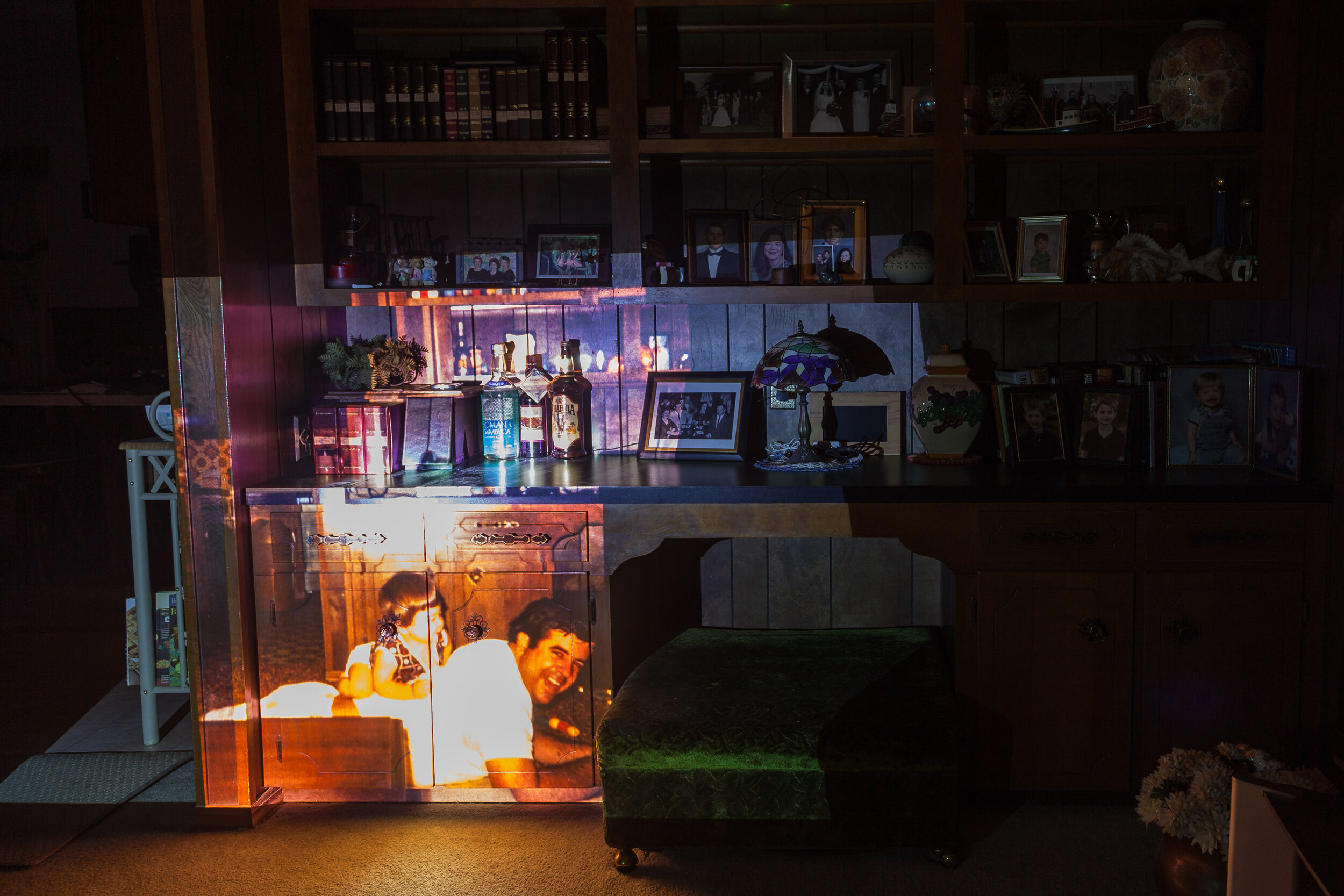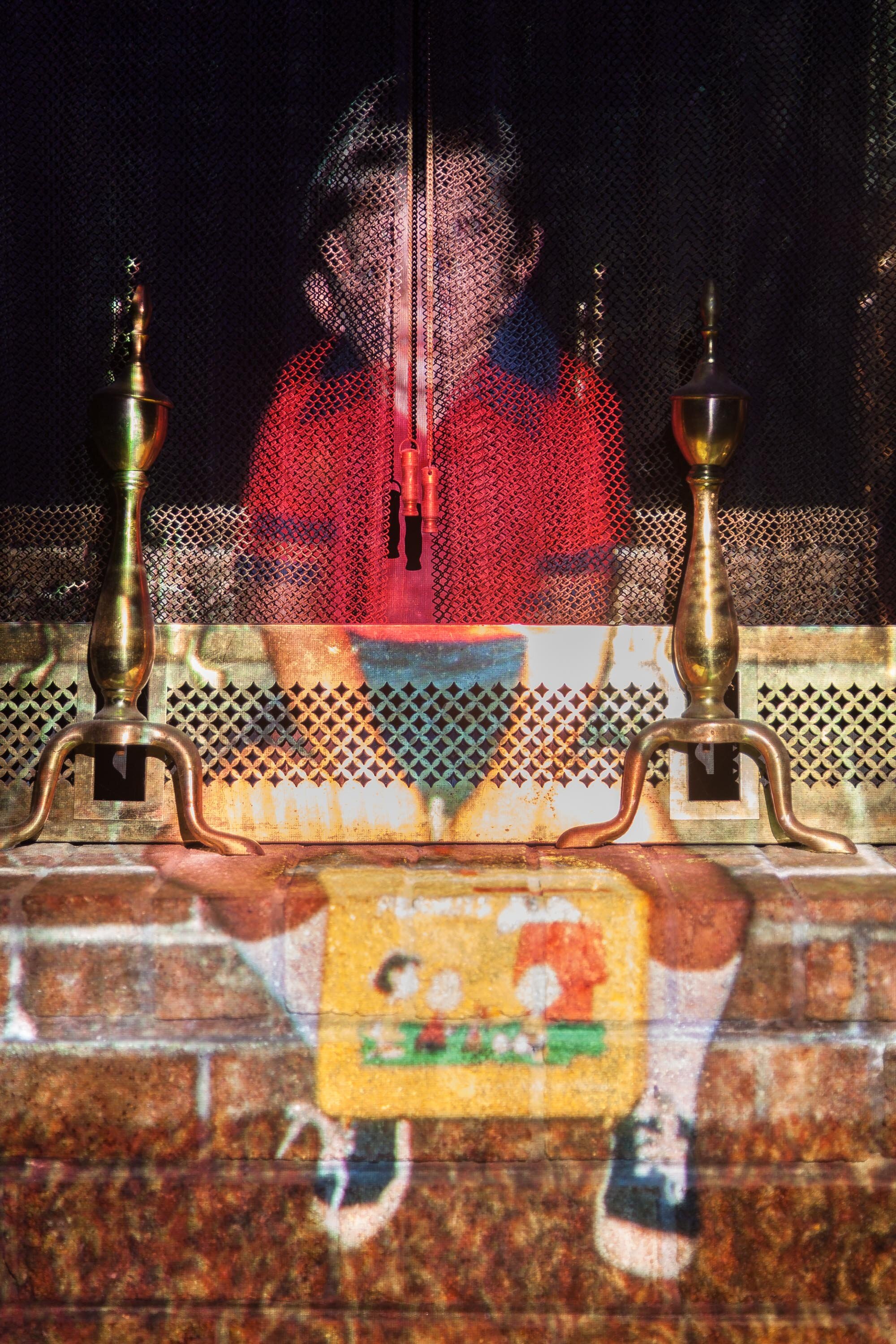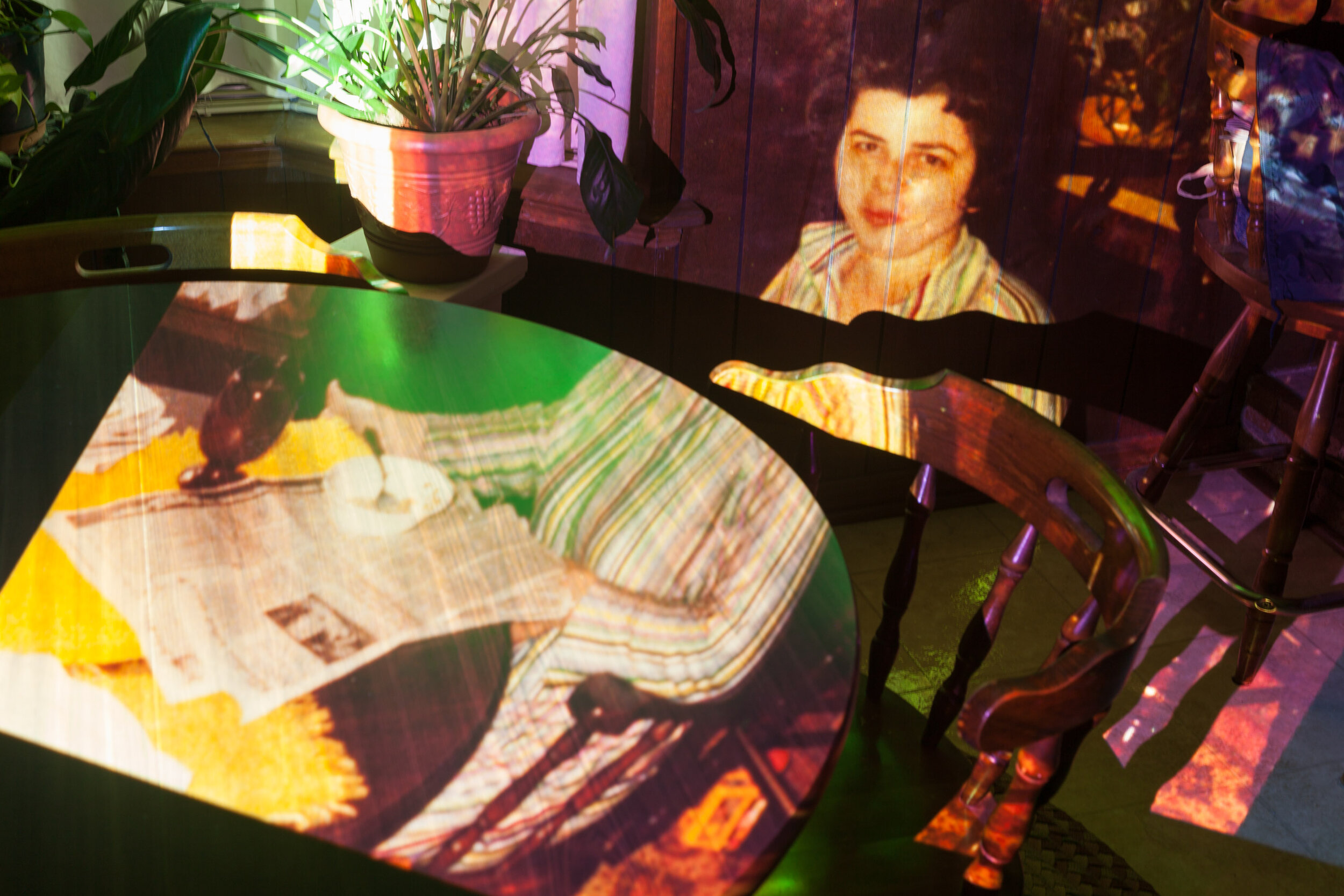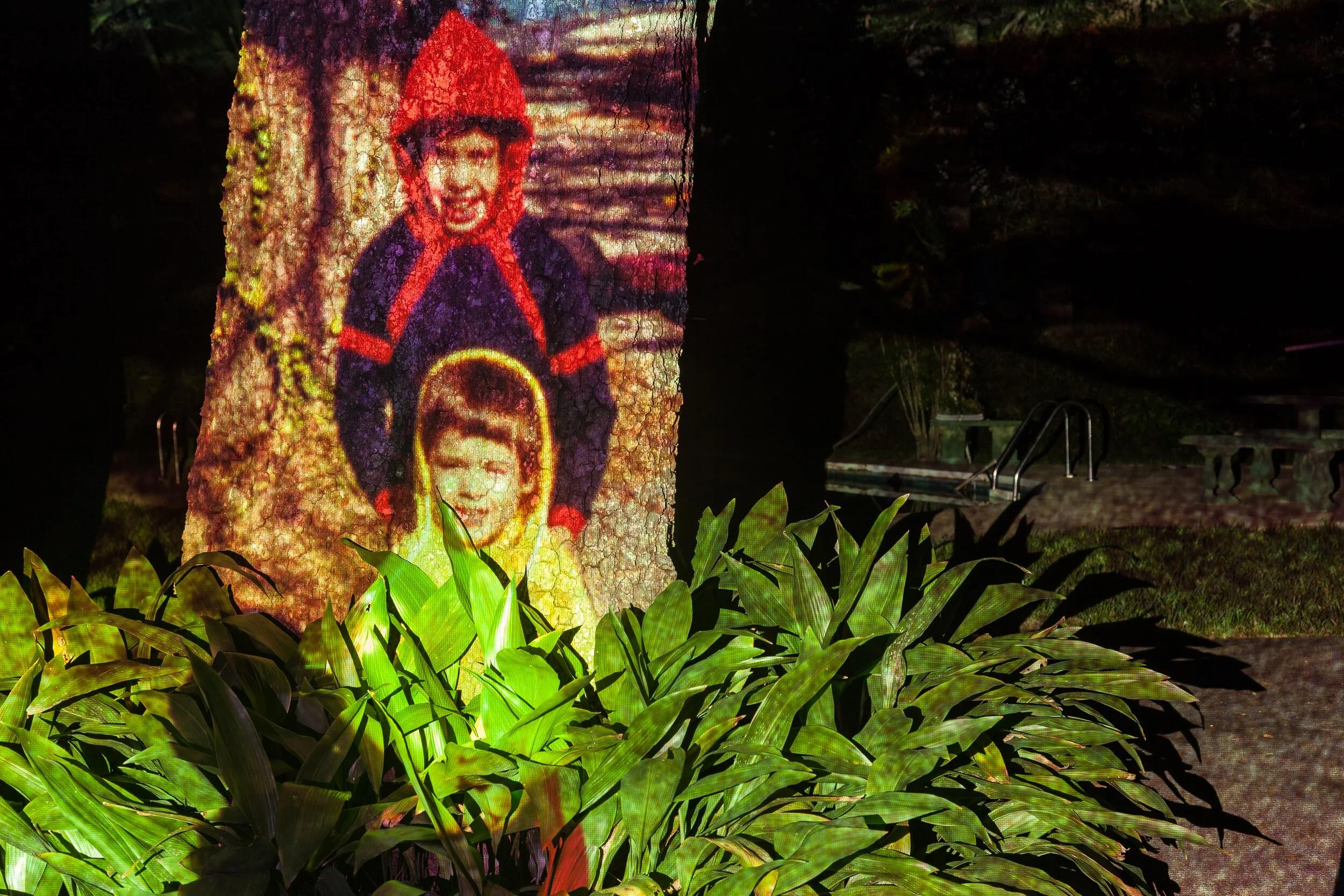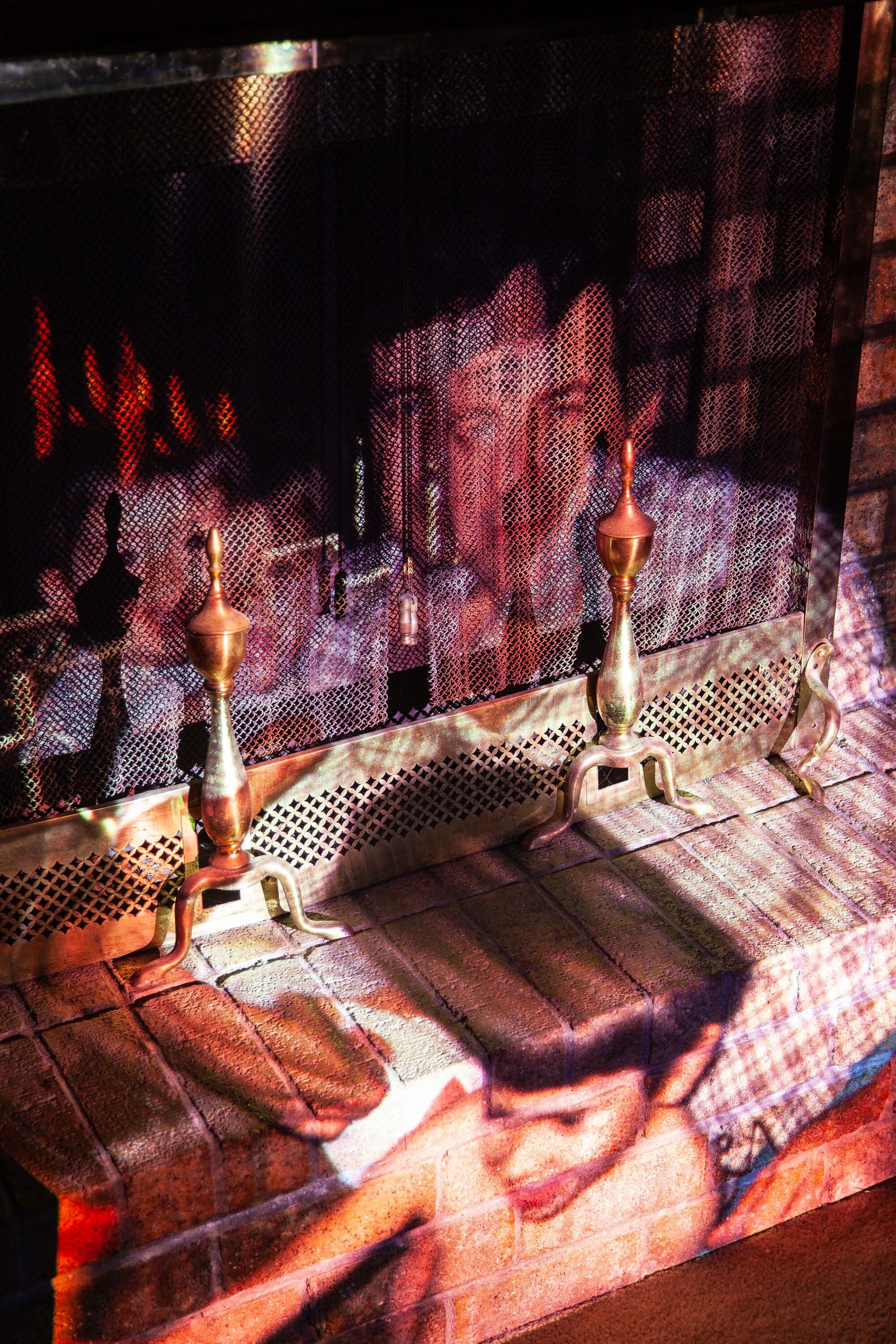Go Back, Go Back
A lens-based project, “Go Back, Go Back” explores the spatial, historical, and technological ambiguity of memory; more specifically, the recollection, reconstruction, and failure of memory manifesting as memento mori and the closing chapter of 50 years of family history. Building upon a 15-year-old archive, “Go Back, Go Back” investigates intergenerational communication and the passage of cultural currency. The project employs the artist’s ancestral home as the site of the projection of childhood photographs onto the same surfaces and spaces from which they were first captured nearly four decades ago. These photographic works problematize notions of material culture, thereby blurring the lines between past and present, memory and vision, surface and screen, analog and digital, and real and implied texture.
By engaging pictorial strategies that draw upon collage and deconstructed narratives of portraiture and permanence, the project’s resulting images confuse physicality and illusion in ways rendered evermore complex through the two-dimensional printing of the images. The photographs explore the margins of recollection, testing representational limitations of lens-based media through a poetic interpretation of the interplay between archive and observation. Fleeting and fading memories, broken links between generational connections, and the final pages in a vernacular familial history linger at the fringes of the mundane, wherein surfaces serve as screens for the projection, physical possession, and embodiment of decades-old memories.
”Go Back, Go Back” is dedicated to the memory of the artist’s mother, Jane Rita Wiemann Treadaway.
Bradly Dever Treadaway is a Brooklyn-based artist and teacher utilizing lens-based image making, moving images, sound, sculpture, installation, and performance to comment on the breakdown of intergenerational communication and broken familial links due to natural disaster, technological evolution, mental health challenges, societal shifts, and the continuance of interpersonal detachment occurring within American communities. His work is visualized through archival interventions, recontextualizing the archive to serve as form, medium, subject matter and concept, and elevated domestic rituals while questioning material significance within the photographic medium. Treadaway creates memorials, monuments, and mnemonic devices to illustrate ancestral collisions with contemporary responses.









